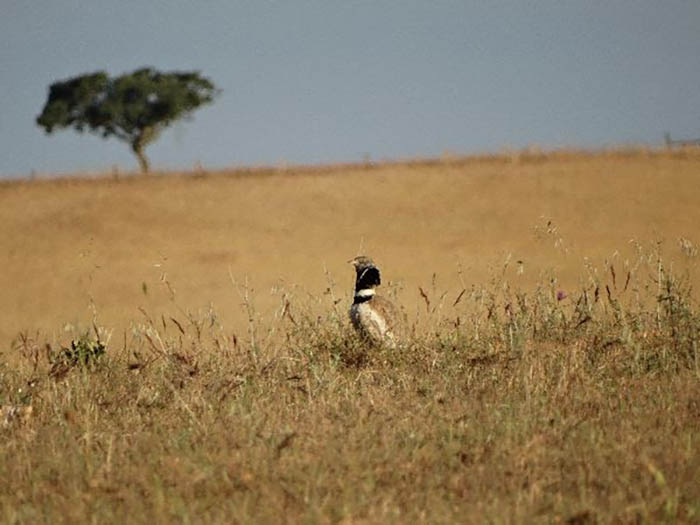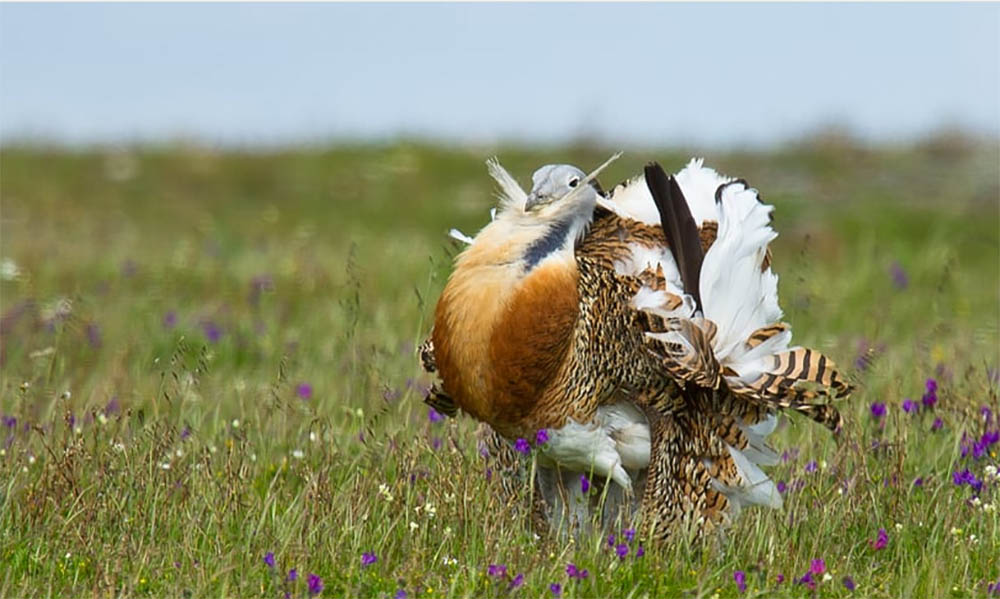A new study reveals that the Natura 2000 Special Protection Areas in agricultural areas of the Iberian Peninsula have lost more than 35 hectares due to the replacement of critical habitat by crops such as intensive olive groves or vineyards. Declining habitats are essential for many species of wild birds, thus putting their conservation at risk.
In Europe, many species inhabit landscapes transformed by man and coexist with humans for millennia. Agricultural steppes are an example of an ecosystem in which human activity – in particular, traditional low-intensity agriculture – coexists with nature conservation, sheltering important populations of endangered species such as the bustard (Otis tarda), the little bustard (tetrax tetrax) or the kestrel (Falco naumanni).
Several of these sites were designated as Special Protection Zones (SPAs) for bird conservation, thus becoming part of the Natura 2000 network, the largest international network of protected areas in the world. This is what happens, for example, in the Campo Branco area, in Castro Verde.
A team of researchers from the Universities of Lisbon, Porto and East Anglia (United Kingdom) assessed the effectiveness of the Natura 2000 Network in conserving agricultural steppes for a period of ten years, comparing satellite images from 2004 and 2015 in 21 Areas of Special Protection – four in Portugal and 17 in Spain – and in adjacent areas.
The results, now published in the journal Biological Conservation, suggest that the ZPEs studied have lost a total of about 35 thousand hectares of agricultural steppes over the last ten years, due to the conversion of the use of these lands, normally used for the cultivation of dryland cereals and extensive pastures, to other agricultural crops of greater importance. intensity, such as olive groves or vineyards and intensive irrigation crops.
These new cultures, in addition to presenting a vegetation structure totally different from that used by steppe birds, are usually associated with the use of insecticides and herbicides, harmful to many of the plants and insects on which these birds feed.
The more than 35 hectares of lost steppes could house more than 500 bustards, according to the researchers.

“The Natura 2000 network is a key component of Europe's biodiversity conservation strategy and is essential for the conservation of diverse threatened species and habitats. In fact, our results indicate that the loss of agricultural steppe is 45% lower within the Natura 2000 Network than in adjacent non-protected steppe areas”, explains João Gameiro, first author of the study, PhD researcher at Center for Ecology, Evolution and Environmental Change – cE3cAt Faculty of Sciences of the University of Lisbon (ULisboa Sciences).
“However, it is important to understand why such important habitat losses occurred even within protected areas. These losses will compromise the positive results of previous conservation efforts and, given the current rate of habitat conversion, agricultural steppes could be reduced to 50% of their current area during this century”, he adds.
“Furthermore, large conversions outside of protected areas could turn these protected areas into steppe islands. This will reduce the connectivity between them, affecting the viability and dispersal capacity of populations, which is especially relevant in light of climate change”, says João Gameiro.
The researchers suggest that poor enforcement of legislation associated with protected areas, insufficient incentives to ensure farmer cooperation, and short-term habitat conservation measures may affect the success of the Natura 2000 network in protecting other habitats. important across Europe.
“Although ecological restoration has become a priority in Europe, we are still losing priority habitats for conservation. Our results highlight crucial shortcomings that need to be addressed to achieve the full potential of the Natura 2000 Network, halt biodiversity loss and meet the goals of a new global biodiversity framework that will soon be defined by the United Nations Convention on Biological Diversity . It is essential to invest in reconciling agriculture with the conservation of biodiversity”, says Jorge Palmeirim, researcher at the ce3c, in ULisboa Sciences, and co-author of the study.
Article reference:
Gameiro J., Silva JP, Franco A., Palmeirim J., Effectiveness of the European Natura 2000 network at protecting Western Europe's agro-steppes (2020) Biological Conservation. https://doi.org/10.1016/j.biocon.2020.108681
Author Communication Office – Center for Ecology, Evolution and Environmental Change – cE3c
Science in the Regional Press – Ciência Viva



















Comments